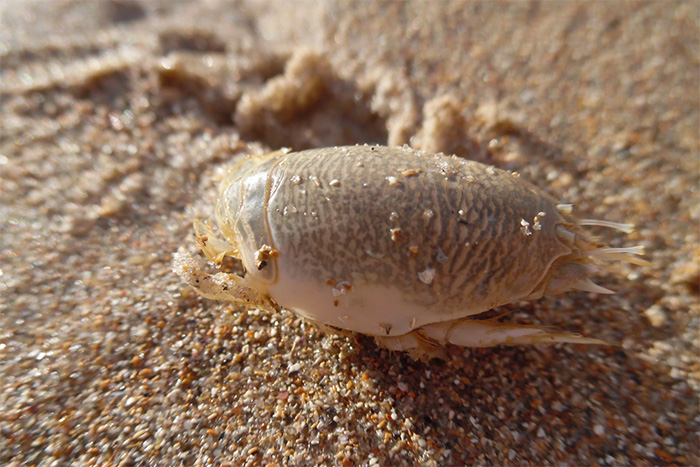Our planet's convoluted history of evolving life has spawned countless weird and wonderful creatures, but none excite evolutionary biologists – or divide taxonomists – quite like crabs.
When researchers attempted to reconcile the evolutionary history of crabs in all their raucous glory just earlier this year, they arrived at the conclusion that the defining features of crabbiness have evolved at least five times in the past 250 million years.
What's more, crabbiness has been lost possibly seven times or more. This repeated evolution of a crab-like body plan has happened so often it has its own name: carcinization. (And yes, if you lose crabbiness to evolution, it's called decarcinization.)
Frog crabs (Raninidae) are one unusual example. Features of the crab body plan were also lost en route to almost-legless Puerto Rican sand crabs (Emerita portoricensis) and various lop-sided hermit crabs – but then red king crabs regained crabby features at the last evolutionary minute.

A Puerto Rican sand crab. (Michelle Barros Sarmento Gama/iNaturalist/CC BY-NC 4.0)
Why evolution keeps crafting and shafting the crab-like body plan remain but a mystery, though evolution must be doing something right in fashioning crabby creatures time and time again.
There are thousands of crab species, which thrive in almost every habitat on Earth, from coral reefs and abyssal plains to creeks, caves and forests. READ MORE...
Why evolution keeps crafting and shafting the crab-like body plan remain but a mystery, though evolution must be doing something right in fashioning crabby creatures time and time again.
There are thousands of crab species, which thrive in almost every habitat on Earth, from coral reefs and abyssal plains to creeks, caves and forests. READ MORE...

No comments:
Post a Comment